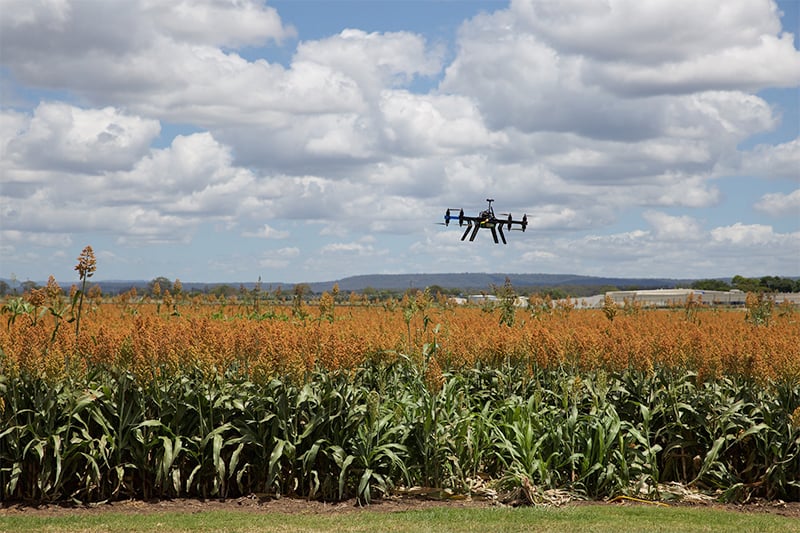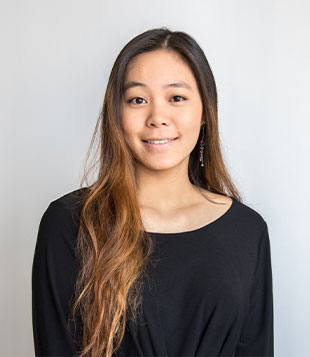Bay McLaughlin, co-founder of tech accelerator Brinc, walks us through his take on southeast Asia’s potentially life and game-changing future by planting the seeds of AgriTech.
Former Apple employee Bay McLaughlin is at the forefront of technological transformation thanks to his involvement in tech accelerator Brinc’s global programmes. With over eight years of experience in Silicon Valley, Bay now sits on the board of Brinc, Soundbrenner, and SilentMode, cutting-edge tech companies with a combined worth of over USD 75 million, holding equity positions in 52 across 26 countries. Currently, his focus is fixed on farming. Working with technologies of the future such as precision farming, drones, smart water monitors, and handheld hybrid-spectrometers, Bay’s enthusiasm is infectious: “With every single one of our investments in AgriTech, we’re seeing increased efficiency, decreased waste, and they’re making more money. It’s a no-brainer.” Established in 2014, Brinc offers three Internet of Things (IoT) accelerators alongside a drone and robotics accelerator, and has recently announced its first food tech programme.

Agriculture technology, commonly shortened to AgriTech, is a fast-growing field that implements technology to maximise efficiency in farming. Air and soil sensors, mechanical automation and engineered closed ecological systems are all part and parcel of the umbrella term AgriTech. Looking back, Forbes estimates a USD 1.5 billion investment was made in AgriTech development in 2017 alone. The AgriTech market in southeast Asia remains one of the field’s biggest opportunities, despite its current immaturity. According to Bay, “this particular region might actually be the leader, long-term. People in Europe or the U.S. are so disconnected from the food supply, but most people in Asia still get it. The technologists in southeast Asia are actually also customers who grew up understanding the problems and the opportunities firsthand. That’s a unique advantage.”
Unfortunately, food security remains a massive issue in southeast Asia, despite having the largest number of farmers in the world. As the United Nations records, “Asia is the continent with the most hungry people, two-thirds of the total.” Bay predicts that AgriTech will be crucial to meeting the growing global demand for food. “In 10 years, I can’t imagine many countries in southeast Asia that won’t be investing in AgriTech. We just can’t afford to keep food supplies as they are.” For now, efforts to implement AgriTech are gradually picking up speed. “There’s currently a really big gap between food production and demand,” Bay explains. “But I’m excited because I’ve seen a couple trends – a couple governments and big telcos are getting behind this. Big insurance companies and microfinance organisations are getting involved.”

Speeding AgriTech development along from their offices across Asia, Europe and the Middle East, Brinc has just launched a new food technology accelerator programme in late September. Poladrone, one of Brinc’s investees, has created drone-based sensors that provide detailed, real-time information on crops. As of February 2017, Poladrone has mapped and processed over 100,000 acres of data. Other projects are anticipated to take longer. Habibi Garden, also supported by Brinc, works in precision agriculture, installing ground sensors, a connected weather system, and a connected water pump to collect and respond to data with bespoke solutions for even a single pepper plant. Enabling greater risk management, this increased access to information also promotes investment. “As a person giving loans, you’re getting real-time, high-fidelity, long-term data from these sensors, so you can start predicting crop fields,” Bay explains. “Now, the government starts getting excited.”

Bay is ardent about the need to shift towards a data-driven agricultural industry. “Right now, so much of the food supply in southeast Asia is based on generational knowledge being passed down. Instincts are being prioritised over data. This is binary – data makes things grow more efficiently. You have less waste. No farmer should be burying their head in the sand when it comes to this. It’s nothing but good for the people around you. You’ve just got to figure out a way to finance it.”
A number of challenges still stand in the way of AgriTech development. “Financing is always a problem,” Bay relates. “There’s not a lot of venture capital in the region.” Importing or exporting hardware is also cost-prohibitive at times. There is a scarcity of technologists as well. Taking Hong Kong as an example, he explains, “We don’t have nearly enough software engineers here – not even close.” Bay believes those barriers are going to come down, but for now, he advises that companies get their prototyping and hardware costs down early, focus on B2B exclusively, and polish up their presentation skills from the marketing side of things. As for businesses still on the fence about AgriTech, Bay offers succinct advice: “Just do it.” Halfway across the world, the American dream lives on.
Related Articles
Your Guide to AgriTech, the Next Big APAC Industry





